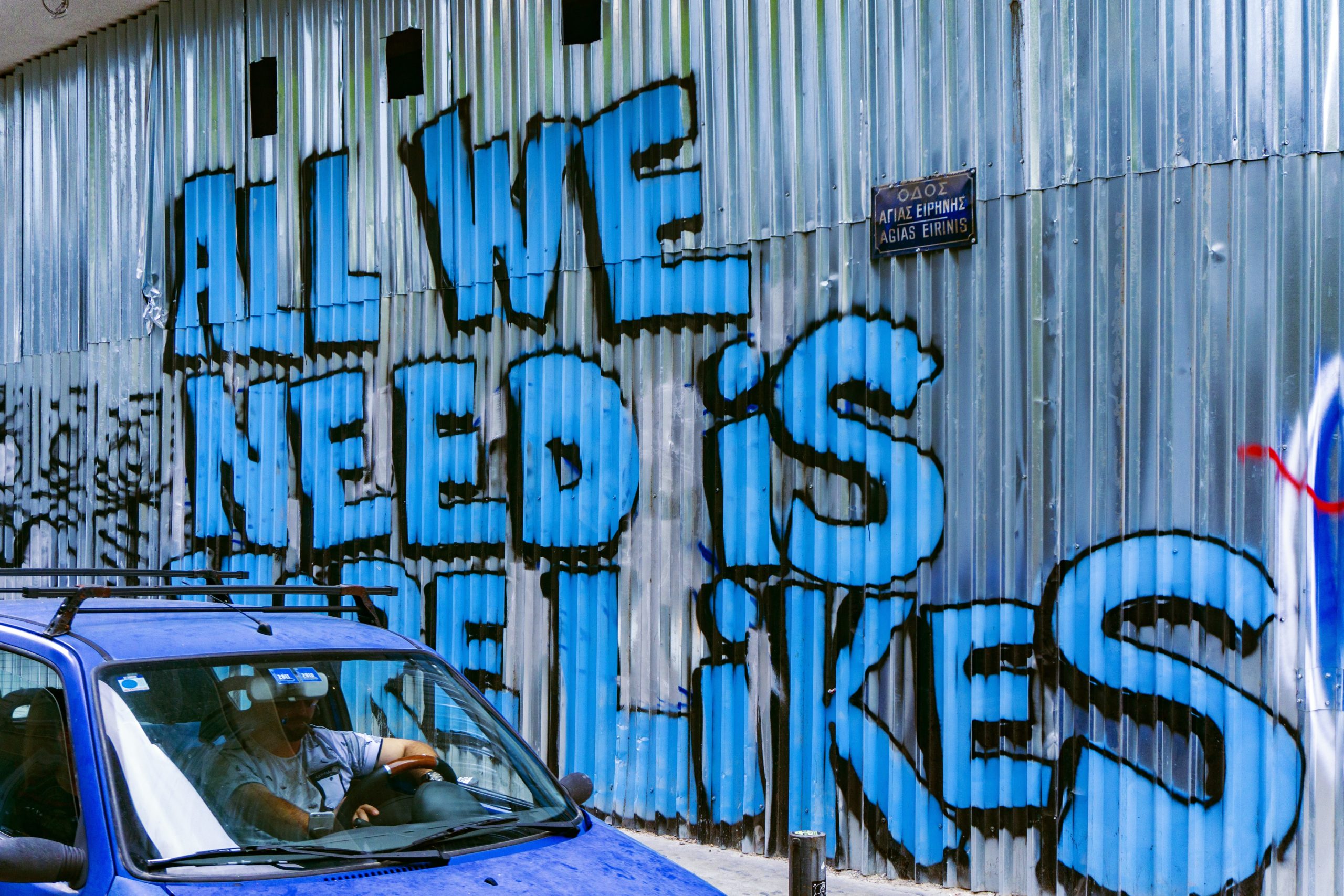
Why Perceived Value is a Choice

It’s difficult to give people a good deal! This is especially true when your prices match products that aren’t known for high quality. We discovered this perceived value problem when we started Barefoot Wine. Our idea was to deliver 10-dollar-bottle quality for 5 dollars. Seems like a hit, right? Wrong!
We were faced with the perception that anything sold for 5 dollars must be mediocre, because most choices at that price point were, well, mediocre. Their producers said, “What do you expect for 5 bucks?” And we were grouped into that same mentality. So what if we were written up for quality in all the industry journals, and we won gold medals and Best of Class in open pricing competitions? “It can’t be any good at 5 dollars!” we’d hear.
It took years for us to demonstrate Barefoot’s excellent quality at the 5-dollar price point. Marketing consultants advised us to raise our prices, both to demonstrate “quality,” and to separate our products from the 5-dollar “cheapies.”
We held our ground. We kept our price, and added signs of value to our packaging instead. We used multicolor screening on the logo, gold foil ink, we covered the fill line with longer capsules, and we were the first in the wine industry to add gold medal stickers on the bottling line. But that wasn’t all! We added third-party accolades with point-of-purchase merchandising materials. When we won a competition, we’d stop what we were doing and get the word out to retail buyers and on the shelves in that territory within 24 hours.
What about the price? Eventually, we “communicated quality and value” by increasing it by 1 dollar and then offering a 1-dollar discount immediately. This way, people perceived the value like this: “This is a higher quality product and it’s on ‘special’ for a limited time.”
Ultimately, these tactics were pricey, but in the grand scheme of things, it’s what was necessary to avoid the “cheap” stigma. Permanently raising the price would’ve ended up discouraging the customers who had already discovered our value, hurt our volume, and put an end to any recommendations coming from our growing clientele.
We learned an unforgettable lesson in perceived value from a New Jersey storeowner we were trying to sell. When we were in the parking lot, we saw a storefront with giant signs that covered up the windows entirely. They were just prices—not even associated with any brands or products. Just numbers. But they were huge! 6 feet high! They said, “3.99” and “5.99.” We were confused.
So, we asked the owner, Abe, “Hey, what’s with the big prices in the window?” and he responded, “You’ve got to qualify the customer! Everybody has $3.99 in their jeans. It puts them at ease. They can afford to come in. They know that at least something in here is $3.99!” So, here was a storeowner using absolutely nothing but a gigantic sign with prices to draw customers. Wow!
Abe continued as our jaws began to drop, and said, “Turn around and tell me what you see.” As we examined the store, we saw many products, each one with a big sign sticking out. On each sign was a two-foot-high price—$4.99, $8.99, $12.99, even $19.99. We said to Abe, “Big prices?” Abe got excited: “They are big prices, but not high prices. BIG PRICES!”
He showed us one particular product. “Ya see that one over there? I had it for $5.99 and no one would buy it. Now it’s at $8.99 with a much bigger sign and I can’t keep it in stock!”
Abe’s customer base saw the bigger signs as a limited-time special, marked down from an even higher price. Wow—it worked!
There are a million suggestions and ideas out there about how to tackle the value perception challenge, but the best and most current resource we have is from the cofounder of Ninja Outreach, Dave Schneider. Dave has excellently defined the issue that brand builders run into when trying to seem valuable without breaking the bank. He offers the most helpful and all-inclusive list we’ve ever seen of ways to enhance your brand’s perceived value. Take a look!
And if you’re interested in learning more about our successes and mistakes while building Barefoot Wine, check out our New York Times Bestselling book, The Barefoot Spirit: How Hardship, Hustle, and Heart Built America’s #1 Wine Brand. You’ll learn a lot, and you’ll get a good laugh too!
For more, read on: http://c-suitenetworkadvisors.com/advisor/michael-houlihan-and-bonnie-harvey/
Preserve Founders Legacy through Story Performed by Actors with Sound Effects and Music
DOES YOUR HISTORY, FOUNDING SPIRIT, & GUIDING PRINCIPLES GET LOST OVER TIME?
Does your growth result in specialization, turf battles, corporate malaise, costly employee turnover, and lack of engagement and loss of the big picture?
"Any company that works intentionally on their culture will like this product for on-boarding."
-Bill Higgs, Host, Culture Code Champions Podcast
"TRANSFORMATIONAL ! Tremendous potential for CEO's to tell their story in a new way!"
-Robert Reiss, Forbes Magazine
After building & selling the famous Barefoot Wine Brand and writing the NYT's Bestseller, The Barefoot Spirit, used in 60 schools of entrepreneurship, and after a decade of being trusted advisors to startups, buildups, and buildouts, Michael Houlihan & Bonnie Harvey have developed Business Audio Theatre. As workplace culture experts, they believe the best way to increase engagement and reduce turnover is through story. They believe the best way to convey business story is through audio theatre provided to new employees on day one. Identification with the founders, their story, and their principles is the basis for identification. Identification is the basis for engagement. Engagement is the basis for longevity. Find out more!
Watch C-Suite TV Interview with Taryn Winter Brill:
Listen to The Barefoot Spirit from the C-Suite Library
Call: 707-484-1600
EMAIL: Sales@TheBarefootSpirit.com
Michael & Bonnie in Action:
1.5 minute: https://barefootspirit.wistia.com/medias/svuthvx4uy
2.5 minute: https://barefootspirit.wistia.com/medias/q1t21okz9f
3 minute: https://barefootspirit.wistia.com/medias/8y5btoyfrw
10 minute: https://barefootspirit.wistia.com/medias/8crj4p1hg9
|Welcome to Business Audio Theatre the Most Effective Onboarding Tool to Reduce Turnover and Increase Engagement
Preserve Founders Legacy through Story Performed by Actors with Sound Effects and Music
DOES YOUR HISTORY, FOUNDING SPIRIT, & GUIDING PRINCIPLES GET LOST OVER TIME?
Does your growth result in specialization, turf battles, corporate malaise, costly employee turnover, and lack of engagement and loss of the big picture?
"Any company that works intentionally on their culture will like this product for on-boarding."
-Bill Higgs, Host, Culture Code Champions Podcast
"TRANSFORMATIONAL ! Tremendous potential for CEO's to tell their story in a new way!"
-Robert Reiss, Forbes Magazine
After building & selling the famous Barefoot Wine Brand and writing the NYT's Bestseller, The Barefoot Spirit, used in 60 schools of entrepreneurship, and after a decade of being trusted advisors to startups, buildups, and buildouts, Michael Houlihan & Bonnie Harvey have developed Business Audio Theatre. As workplace culture experts, they believe the best way to increase engagement and reduce turnover is through story. They believe the best way to convey business story is through audio theatre provided to new employees on day one. Identification with the founders, their story, and their principles is the basis for identification. Identification is the basis for engagement. Engagement is the basis for longevity. Find out more!
Watch C-Suite TV Interview with Taryn Winter Brill:
Listen to The Barefoot Spirit from the C-Suite Library
Call: 707-484-1600
EMAIL: Sales@TheBarefootSpirit.com
Michael & Bonnie in Action:
1.5 minute: https://barefootspirit.wistia.com/medias/svuthvx4uy
2.5 minute: https://barefootspirit.wistia.com/medias/q1t21okz9f
3 minute: https://barefootspirit.wistia.com/medias/8y5btoyfrw
10 minute: https://barefootspirit.wistia.com/medias/8crj4p1hg9
|Welcome to Business Audio Theatre the Most Effective Onboarding Tool to Reduce Turnover and Increase Engagement
Preserve Founders Legacy through Story Performed by Actors with Sound Effects and Music
DOES YOUR HISTORY, FOUNDING SPIRIT, & GUIDING PRINCIPLES GET LOST OVER TIME?
Does your growth result in specialization, turf battles, corporate malaise, costly employee turnover, and lack of engagement and loss of the big picture?
"Any company that works intentionally on their culture will like this product for on-boarding."
-Bill Higgs, Host, Culture Code Champions Podcast
"TRANSFORMATIONAL ! Tremendous potential for CEO's to tell their story in a new way!"
-Robert Reiss, Forbes Magazine
After building & selling the famous Barefoot Wine Brand and writing the NYT's Bestseller, The Barefoot Spirit, used in 60 schools of entrepreneurship, and after a decade of being trusted advisors to startups, buildups, and buildouts, Michael Houlihan & Bonnie Harvey have developed Business Audio Theatre. As workplace culture experts, they believe the best way to increase engagement and reduce turnover is through story. They believe the best way to convey business story is through audio theatre provided to new employees on day one. Identification with the founders, their story, and their principles is the basis for identification. Identification is the basis for engagement. Engagement is the basis for longevity. Find out more!
Watch C-Suite TV Interview with Taryn Winter Brill:
Listen to The Barefoot Spirit from the C-Suite Library
Call: 707-484-1600
EMAIL: Sales@TheBarefootSpirit.com
Michael & Bonnie in Action:
1.5 minute: https://barefootspirit.wistia.com/medias/svuthvx4uy
2.5 minute: https://barefootspirit.wistia.com/medias/q1t21okz9f
3 minute: https://barefootspirit.wistia.com/medias/8y5btoyfrw
10 minute: https://barefootspirit.wistia.com/medias/8crj4p1hg9
- Tell Your Story With an Experienced and Award-Winning Team - December 10, 2020
- The Romance of the Wine Business – Not! - November 19, 2020
- Do a Re-Take on Your Miss-Take - October 23, 2020







